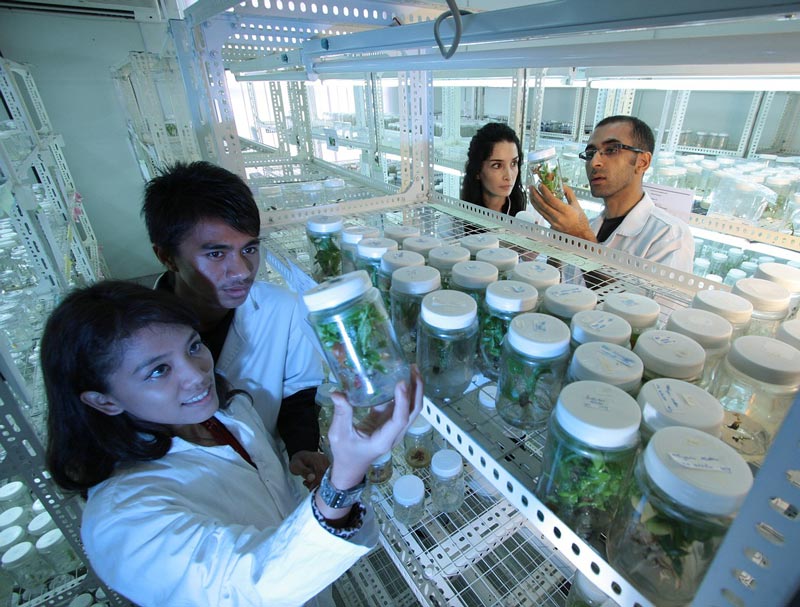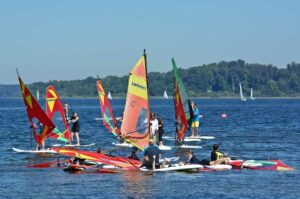Welcome to WordPress. This is your first post. Edit or delete it, then start writing!
Author: CCIR-Blended-Finance-Mechanism
Education is designed to support early development in preparation for participation in school and society. The programs are designed for children below the age of 3. This is ISCED level 01. Preschools provide education from ages approximately three to seven, depending on the country when children enter primary education. The children now readily interact with their peers and the educator. These are also known as nursery schools and as kindergarten, except in the US, where the term kindergarten refers to the earliest levels of primary education.[19] Kindergarten “provides a child-centered, preschool curriculum for three- to seven-year-old children that aim[s] at unfolding the child’s physical, intellectual, and moral nature with a balanced emphasis on each of them.”This is ISCED level 02.

In most contemporary educational systems of the world, secondary education comprises the formal education that occurs during adolescence. In the United States, Canada, and Australia, primary and secondary education together are sometimes referred to as K-12 education, and in New Zealand Year 1–13 is used. The purpose of secondary education can be to give common knowledge, to prepare for higher education, or to train directly in a profession.
The central role of an after-school program aide is to support the teacher’s agenda, which requires listening closely to instructions and following them in accordance with school policies. Aides often help teachers with the lesson and activity plans, such as taking small children to observe seasonal changes and plant life.
The central role of an after-school program aide is to support the teacher’s agenda, which requires listening closely to instructions and following them in accordance with school policies. Aides often help teachers with the lesson and activity plans, such as taking small children to observe seasonal changes and plant life.
Education is designed to support early development in preparation for participation in school and society. The programs are designed for children below the age of 3. This is ISCED level 01. Preschools provide education from ages approximately three to seven, depending on the country when children enter primary education. The children now readily interact with their peers and the educator. These are also known as nursery schools and as kindergarten, except in the US, where the term kindergarten refers to the earliest levels of primary education.[19] Kindergarten “provides a child-centered, preschool curriculum for three- to seven-year-old children that aim[s] at unfolding the child’s physical, intellectual, and moral nature with a balanced emphasis on each of them.”This is ISCED level 02.

In most contemporary educational systems of the world, secondary education comprises the formal education that occurs during adolescence. In the United States, Canada, and Australia, primary and secondary education together are sometimes referred to as K-12 education, and in New Zealand Year 1–13 is used. The purpose of secondary education can be to give common knowledge, to prepare for higher education, or to train directly in a profession.
The central role of an after-school program aide is to support the teacher’s agenda, which requires listening closely to instructions and following them in accordance with school policies. Aides often help teachers with the lesson and activity plans, such as taking small children to observe seasonal changes and plant life.
Education is designed to support early development in preparation for participation in school and society. The programs are designed for children below the age of 3. This is ISCED level 01. Preschools provide education from ages approximately three to seven, depending on the country when children enter primary education. The children now readily interact with their peers and the educator. These are also known as nursery schools and as kindergarten, except in the US, where the term kindergarten refers to the earliest levels of primary education.[19] Kindergarten “provides a child-centered, preschool curriculum for three- to seven-year-old children that aim[s] at unfolding the child’s physical, intellectual, and moral nature with a balanced emphasis on each of them.”This is ISCED level 02.

In most contemporary educational systems of the world, secondary education comprises the formal education that occurs during adolescence. In the United States, Canada, and Australia, primary and secondary education together are sometimes referred to as K-12 education, and in New Zealand Year 1–13 is used. The purpose of secondary education can be to give common knowledge, to prepare for higher education, or to train directly in a profession.
The central role of an after-school program aide is to support the teacher’s agenda, which requires listening closely to instructions and following them in accordance with school policies. Aides often help teachers with the lesson and activity plans, such as taking small children to observe seasonal changes and plant life.
Sport or sports are all forms of usually competitive physical activity or games which, through casual or organised participation, aim to use, maintain or improve physical ability and skills while providing enjoyment to participants, and in some cases, entertainment for spectators. Usually the contest or game is between two sides, each attempting to exceed the other. Some sports allow a tie game; others provide tie-breaking methods, to ensure one winner and one loser.
A number of such two-sided contests may be arranged in a tournament producing a champion. Many sports leagues make an annual champion by arranging games in a regular sports season, followed in some cases by playoffs. Hundreds of sports exist, from those between single contestants, through to those with hundreds of simultaneous participants, either in teams or competing as individuals. In certain sports such as racing, many contestants may compete, each against all with one winner.
Records of performance are often kept, and for popular sports, this information may be widely announced or reported in sport news. Sport is also a major source of entertainment for non-participants, with spectator sport drawing large crowds to sport venues, and reaching wider audiences through broadcasting. Sports betting is in some cases severely regulated, and in some cases is central to the sport.
According to A.T. Kearney, a consultancy, the global sporting industry is worth up to $620 billion as of 2013. The world’s most accessible and practised sport is running, while association football is its most popular spectator sport.
Sport or sports are all forms of usually competitive physical activity or games which, through casual or organised participation, aim to use, maintain or improve physical ability and skills while providing enjoyment to participants, and in some cases, entertainment for spectators. Usually the contest or game is between two sides, each attempting to exceed the other. Some sports allow a tie game; others provide tie-breaking methods, to ensure one winner and one loser.
A number of such two-sided contests may be arranged in a tournament producing a champion. Many sports leagues make an annual champion by arranging games in a regular sports season, followed in some cases by playoffs. Hundreds of sports exist, from those between single contestants, through to those with hundreds of simultaneous participants, either in teams or competing as individuals. In certain sports such as racing, many contestants may compete, each against all with one winner.
Records of performance are often kept, and for popular sports, this information may be widely announced or reported in sport news. Sport is also a major source of entertainment for non-participants, with spectator sport drawing large crowds to sport venues, and reaching wider audiences through broadcasting. Sports betting is in some cases severely regulated, and in some cases is central to the sport.
According to A.T. Kearney, a consultancy, the global sporting industry is worth up to $620 billion as of 2013. The world’s most accessible and practised sport is running, while association football is its most popular spectator sport.
Sport or sports are all forms of usually competitive physical activity or games which, through casual or organised participation, aim to use, maintain or improve physical ability and skills while providing enjoyment to participants, and in some cases, entertainment for spectators. Usually the contest or game is between two sides, each attempting to exceed the other. Some sports allow a tie game; others provide tie-breaking methods, to ensure one winner and one loser.
A number of such two-sided contests may be arranged in a tournament producing a champion. Many sports leagues make an annual champion by arranging games in a regular sports season, followed in some cases by playoffs. Hundreds of sports exist, from those between single contestants, through to those with hundreds of simultaneous participants, either in teams or competing as individuals. In certain sports such as racing, many contestants may compete, each against all with one winner.
Records of performance are often kept, and for popular sports, this information may be widely announced or reported in sport news. Sport is also a major source of entertainment for non-participants, with spectator sport drawing large crowds to sport venues, and reaching wider audiences through broadcasting. Sports betting is in some cases severely regulated, and in some cases is central to the sport.
According to A.T. Kearney, a consultancy, the global sporting industry is worth up to $620 billion as of 2013. The world’s most accessible and practised sport is running, while association football is its most popular spectator sport.
Sport or sports are all forms of usually competitive physical activity or games which, through casual or organised participation, aim to use, maintain or improve physical ability and skills while providing enjoyment to participants, and in some cases, entertainment for spectators. Usually the contest or game is between two sides, each attempting to exceed the other. Some sports allow a tie game; others provide tie-breaking methods, to ensure one winner and one loser.
A number of such two-sided contests may be arranged in a tournament producing a champion. Many sports leagues make an annual champion by arranging games in a regular sports season, followed in some cases by playoffs. Hundreds of sports exist, from those between single contestants, through to those with hundreds of simultaneous participants, either in teams or competing as individuals. In certain sports such as racing, many contestants may compete, each against all with one winner.
Records of performance are often kept, and for popular sports, this information may be widely announced or reported in sport news. Sport is also a major source of entertainment for non-participants, with spectator sport drawing large crowds to sport venues, and reaching wider audiences through broadcasting. Sports betting is in some cases severely regulated, and in some cases is central to the sport.
According to A.T. Kearney, a consultancy, the global sporting industry is worth up to $620 billion as of 2013. The world’s most accessible and practised sport is running, while association football is its most popular spectator sport.







